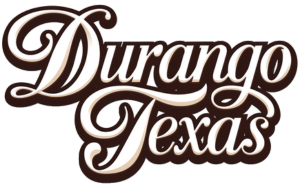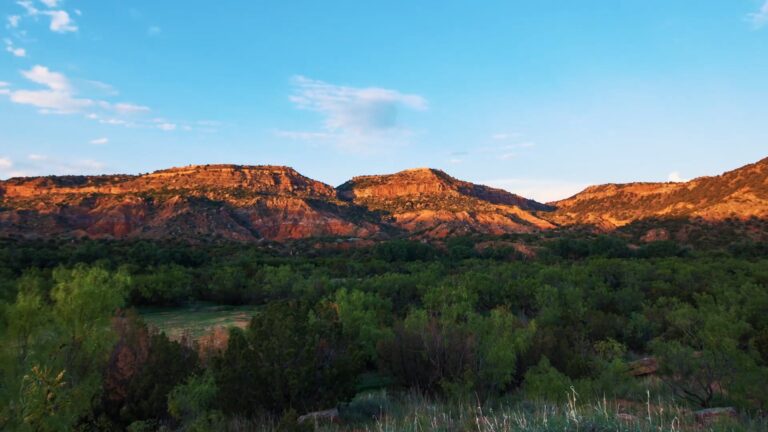Stretching across the northernmost part of Texas between New Mexico and Oklahoma, the Texas Panhandle Plains Region offers wide-open skies, deep cultural roots, and unforgettable experiences.
This rectangular region—resembling a panhandle—extends east toward Fort Worth and south to Interstate 20, making it a vast and diverse part of the state.
The skies here are something else—stars shine with exceptional brightness over the clear, expansive plains. The Panhandle begins at the Oklahoma border, rolls south to San Angelo, and runs west to New Mexico.
Its eastern edge reaches towns like Wichita Falls and Brownwood.
Iconic Cities and Small Town Treasures
- Amarillo: Route 66, cowboy culture, Palo Duro Canyon nearby
- Lubbock: Birthplace of Buddy Holly, live music, Texas Tech University
- San Angelo: Wool and mohair hub, Fort Concho, military presence
- Wichita Falls: Re-created waterfall, museums, cultural venues
- Abilene: Shipping origins, cattle industry, oil discovery
@mapreels Texas’ rectangular panhandle is the result of territorial compromises, debt deals, and historic boundary lines like the Missouri Compromise. Discover the fascinating history behind this unique region and its vital role in farming, ranching, and tourism today. #texas #texaspanhandle #lonestarstate #hookem ♬ original sound – MapReels
Big cities anchor the Texas Panhandle Plains Region, offering distinct experiences and character across the board. Amarillo, Abilene, Wichita Falls, San Angelo, and Lubbock each add flavor to the area, shaped by local culture, history, and industry.
Amarillo delivers a classic cowboy-town setting. Western vibes run strong through the streets, and a drive along Route 66 still brings travelers into town. Just outside city limits, Palo Duro Canyon State Park offers hiking, biking, and incredible views—ideal for adventure seekers.
Lubbock pulses with an energetic rhythm. Known for being the hometown of Buddy Holly, it mixes music heritage with a lively college-town atmosphere. Texas Tech University fuels its entertainment scene, and festivals keep it active year-round.
San Angelo, once a military fort, now thrives through its industries in agriculture, healthcare, and manufacturing. Wool and mohair production helped shape its identity, and Goodfellow Air Force Base keeps it tied to its military origins.
Wichita Falls blends history with progress. A re-creation of the original falls gives a nod to the town’s past, while museums and civic centers keep the city engaged today.
Abilene, founded as a shipping hub in the 1880s, grew into a significant cattle and oil town. A major centennial celebration in 1981 even coincided with the discovery of oil, further shaping its trajectory.
Small Towns with Big Stories
Alongside its larger cities, the region features smaller towns packed with character and tradition. These towns may not cover much land, but their contributions to local identity are anything but minor.
Sweetwater puts on the world’s largest Rattlesnake Roundup every year, drawing visitors from all over for a one-of-a-kind event. It’s also now known for leading the way in wind power production.
Andrews welcomes visitors with options for camping, swimming, golfing, and fishing—outdoor recreation is the focus here, and there’s something for everyone who enjoys fresh air and open spaces.
Archer City has literary ties. Author Larry McMurtry’s Booked Up Bookstore sits here, and two of his novels—The Last Picture Show and Texasville—were turned into movies filmed on location in the town.
Canyon serves as the gateway to Palo Duro Canyon. Its position near this geological marvel makes it a frequent stop for travelers heading toward the canyon’s trails and campsites.
- Sweetwater: Rattlesnake Roundup, wind energy hub
- Andrews: Fishing, swimming, camping, and golf
- Archer City: Larry McMurtry connection, filming location for classic Texas cinema
- Canyon: Direct access to Palo Duro Canyon
Each city and town across the Texas Panhandle Plains holds a distinct role in shaping the area’s identity. There’s a consistent rhythm—part rugged heritage, part celebration—that gives travelers more than just a quick stop; it gives them something to remember.
Festivals and Music History
Music is at the heart of the Texas Panhandle Plains, pulsing through its towns, echoing through its canyons, and rolling with the tumbleweeds across the plains.
Buddy Holly’s birthplace, Lubbock, embraces that legacy with pride, most notably through the Lubbock Music Festival held every Labor Day Weekend. It’s a celebration of not only Holly’s influence but of the continued vibrancy of live music in the area.
The open space and tight-knit communities create the perfect backdrop for music festivals that feel personal, yet energizing.
Throughout the year, music lovers can find events dedicated to genres that have shaped Texas culture. These aren’t your run-of-the-mill shows—they’re cultural fixtures that bring together generations. Western Swing, Rock ‘n’ Roll, Bluegrass, and Country all have their stage time in towns across the region.
Annual Music Festivals You Shouldn’t Miss
View this post on Instagram
- Lubbock Music Festival (Labor Day Weekend): Celebrates the musical roots of Lubbock and showcases local, regional, and national talent.
- Bob Wills Day in Turkey (April): Pays tribute to the King of Western Swing with live music, parades, and a celebration of Texas dance hall culture.
- Mobeetie Music Festival (July): Brings together musicians and fans for a day of performances, food, and small-town festivities.
- Tule Creek Bluegrass Festival in Tulia (July): A favorite for lovers of traditional acoustic sounds, hosted in a friendly, relaxed setting.
- West Texas Western Swing Music Festival in Snyder (June): Features Western Swing acts, dance events, and community involvement all weekend long.
Texas Legacies at Palo Duro Canyon
The music isn’t confined to city blocks. In Palo Duro Canyon State Park, a summer performance series called Texas Legacies draws crowds to the canyon amphitheater.
It’s not just about sitting and listening—it’s about watching music and storytelling come together under the stars.
Each performance combines historical narrative with live music, acting, and local pride. Running June through August, it adds a theatrical edge to the region’s music heritage while connecting visitors to its past through sound and spectacle.
Outdoor Adventures and State Parks

Nature in the Texas Panhandle Plains doesn’t just sit quietly—it calls you out loud with wide horizons, rugged terrain, and endless skies.
Outdoor lovers can expect a full spectrum of activities ranging from adrenaline-pumping biking trails to quiet lakeside camping.
Palo Duro Canyon State Park is often the first stop for visitors, earning its nickname as the “Grand Canyon of Texas” for good reason. Red rock formations, miles of hiking and biking trails, and outdoor amphitheaters make it a must-see.
Caprock Canyons State Park & Trailway, located near Quitaque, brings visitors up close with roaming bison, canyons carved by time, and long, winding paths ideal for horseback riding or long-distance hiking.
Copper Breaks State Park near Quanah offers a more remote experience, where stargazing reaches new levels thanks to its dark-sky designation. Big Spring State Park offers a scenic overlook, winding drives, and picnic areas perfect for family outings.
Water enthusiasts can enjoy Lake Colorado City State Park, where swimming, boating, and fishing meet the wide-open Texas sky.
- Palo Duro Canyon State Park: Iconic canyon views, camping, biking trails, outdoor theater
- Caprock Canyons State Park & Trailway: Bison sightings, dramatic cliffs, multi-use trails
- Copper Breaks State Park: Ideal for stargazing, hiking, and quiet escapes
- Big Spring State Park: Elevated park views, nature paths, and picnic areas
- Lake Colorado City State Park: Great for fishing, swimming, kayaking, and RV camping
Cultural Landmarks and Local Attractions
The stories told across the Panhandle Plains are bold, odd, and occasionally wild—and that’s just how people like them. Archer City made its mark through Larry McMurtry’s novels and films, turning a small town into a cinema legacy.
Dalhart’s connection to the 3-million-acre XIT Ranch, which funded the Texas State Capitol through a land swap, still echoes in its identity. Cisco doesn’t just hold historical interest; it marks where Conrad Hilton opened his very first hotel, setting off a hospitality empire.
Mineral Wells draws visitors for its so-called “Crazy Water,” long believed to have curative properties. And in Jacksboro, visitors can walk trails and explore buildings at Fort Richardson State Park, where frontier history still feels tangible.
- Archer City: Home of McMurtry’s Booked Up bookstore and movie history
- Dalhart: XIT Ranch legacy and state capitol connection
- Cisco: Site of Hilton’s first hotel
- Mineral Wells: Known for Crazy Water and the historic Baker Hotel
- Jacksboro: Fort Richardson’s trails and restored frontier-era buildings
Every town carries a story, every site adds texture to the broader experience. Cowboys, Comanche chiefs, early oil tycoons, and music legends all left their mark in one way or another. Spend a day—or a few—digging into them, and the Texas Panhandle Plains will feel more familiar than expected.
The Bottom Line
Texas Panhandle Plains offers a setting where open skies meet bold stories. Travelers can follow Route 66, hike through canyons, listen to local music, or walk the streets of towns tied to film and history.
Each stop adds something memorable, whether it’s a bison sighting at Caprock or a tribute to Buddy Holly in Lubbock.
Wide roads, live festivals, and peaceful parks all come together to create something worth experiencing.
Those who venture out here don’t just visit; they remember.

